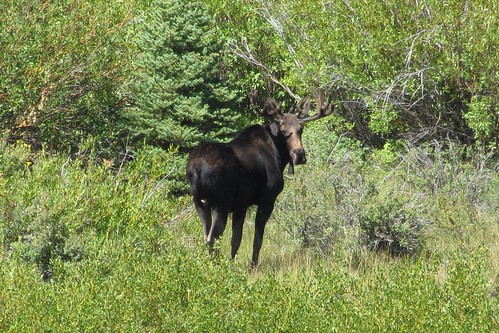A large, family-run ranch in Wyoming was recently placed in permanent conservation easement with the help of USDA’s Natural Resources Conservation Service (NRCS) and The Conservation Fund. The efforts of other partners were also key.

The ranch, which is one of the oldest operating ranches held by one family in the Green River Valley, will be permanently protected under NRCS’ Farm and Ranch Lands Protection Program (FRPP). The 10,000-acre ranch is actually two homestead properties owned by the Budd-Espenscheid family, near the town of Big Piney, and will be protected under two easements.
The Budd-Espenscheid family can date their Wyoming roots back to 1879, when Daniel B. Budd inherited a herd of cattle and settled along the Piney Creeks. In 1905, his son John established the family’s first homestead ranch about nine miles west. Over the next century, the family purchased additional neighboring properties and expanded their ranching operations.
Today, Budd Ranches, Inc. is owned and managed by brothers Chad and Brian Espenscheid and their wives Gudrid and Annie, the family’s fourth generation of ranchers.
The Espenscheid brothers originally approached The Conservation Fund with a vision of purchasing the neighboring ranch and funding the purchase with the sale of conservation easements on both properties. The Conservation Fund then applied for half of the funding needed to accomplish this through NRCS’ easement program, FRPP.
This land preservation agreement will not only enable the Budd-Espenscheid Family to continue its ranching operations, but also protects important wildlife habitat in the Green River Valley. The property provides thousands of acres of crucial wintering ranges and migration corridors for pronghorn antelope, mule deer, moose and elk as well as important wetland habitat for songbirds, shorebirds and numerous aquatic species.

In addition, about 15 miles of streams, including several miles of North Piney Creek—an important tributary of the Green River that provides spawning habitat for the Colorado River cutthroat trout—are on the properties.
A conservation easement is a legal agreement between a landowner and a land trust or government agency that permanently limits uses of the land in order to protect its conservation values. It allows landowners to continue to own and use their land and eventually sell it or pass it on to heirs.
The FRPP funds were matched by the Wyoming Wildlife and Natural Resource Trust, Jonah Interagency Mitigation and Reclamation Office, Wyoming Game and Fish Commission, Rocky Mountain Elk Foundation, Wyoming Stock Growers Agricultural Land Trust, Knobloch Family Foundation and other private donors.
Find out more about the Farm and Ranch Lands Protection Program.
Check out more conservation stories on the USDA blog.
Follow NRCS on Twitter.
